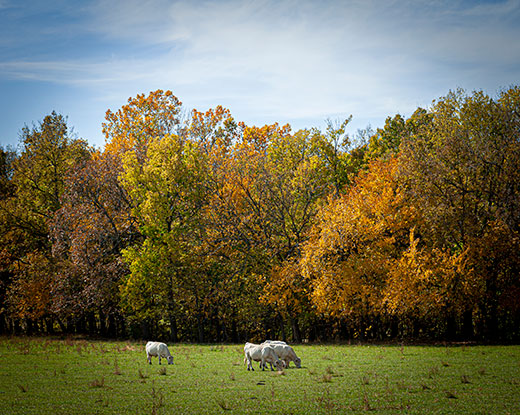
Pigments in leaves determine the colors seen in the fall.
Why do trees change color in fall?
K-State horticulture expert explains how this beautiful phenomenon happens
Oct. 21, 2021
MANHATTAN, Kan. — A favorite part of the fall season for many is the changing color of the tree leaves, but have you ever wondered how this happens?
“Specific pigments determine individual colors,” said Kansas State University horticulture expert Ward Upham. “Foliage derives its normal green color from chlorophyll, the substance that captures the energy of the sun.”
Chlorophyll is what allows leaves to produce the necessary energy, in the form of sugar, from sunlight. This is the process of photosynthesis.
Other pigments, except red and purple, are already present in the leaves throughout the growing season. They are masked by chlorophyll, making the leaves appear green. The red and purple pigments are produced after chlorophyll is destroyed in the fall.
Common pigments and the corresponding color they appear are:
- Anthocyanin – red and purple
- Xanthophyll – yellow
- Carotene and Xanthophyll – orange
- Tannin – brown
Once fall progresses and certain weather conditions are met, the leaves begin a process that enable the non-green pigments to show.
“Each leaf develops an abscission layer at the base of the petiole, or leaf, stem, that prevents sugars from being transported down the trunk to the roots for storage,” Upham said.
The sugar then accumulates in the leaves, and its high concentration causes more intense colors.
Certain trees species may also color more vibrantly than others, according to Upham. Maples and oaks naturally produce vivid colors. These types of trees are more prevalent in New England than Kansas, which is why it may appear that Kansas trees do not color as well.
How well a tree produces color is also influenced by the weather. Ideal weather conditions for the changing colors are warm, sunny days and cool nights. More sunlight encourages photosynthesis and more sugar accumulation in leaves. Cloudy days and warm nights will make the trees produce less sugar and less vibrant colors.
The weather during other seasons may also affect fall coloring.
“Heavy rains in the early spring or hot, dry weather during the summer can both have a deleterious effect on fall color,” Upham said.
Once the fall colors arrive, frosts and freezes can shorten their duration – leaving behind just the brown colors. Make sure to enjoy the fall leaves while you can, before the cold winter weather sets in, Upham said
Upham and his colleagues in K-State’s Department of Horticulture and Natural Resources produce a weekly Horticulture Newsletter with tips for maintaining home landscapes. The newsletter is available to view online or can be delivered by email each week.
Interested persons can also send their garden- and yard-related questions to Upham at wupham@ksu.edu, or contact your local K-State Research and Extension office.

